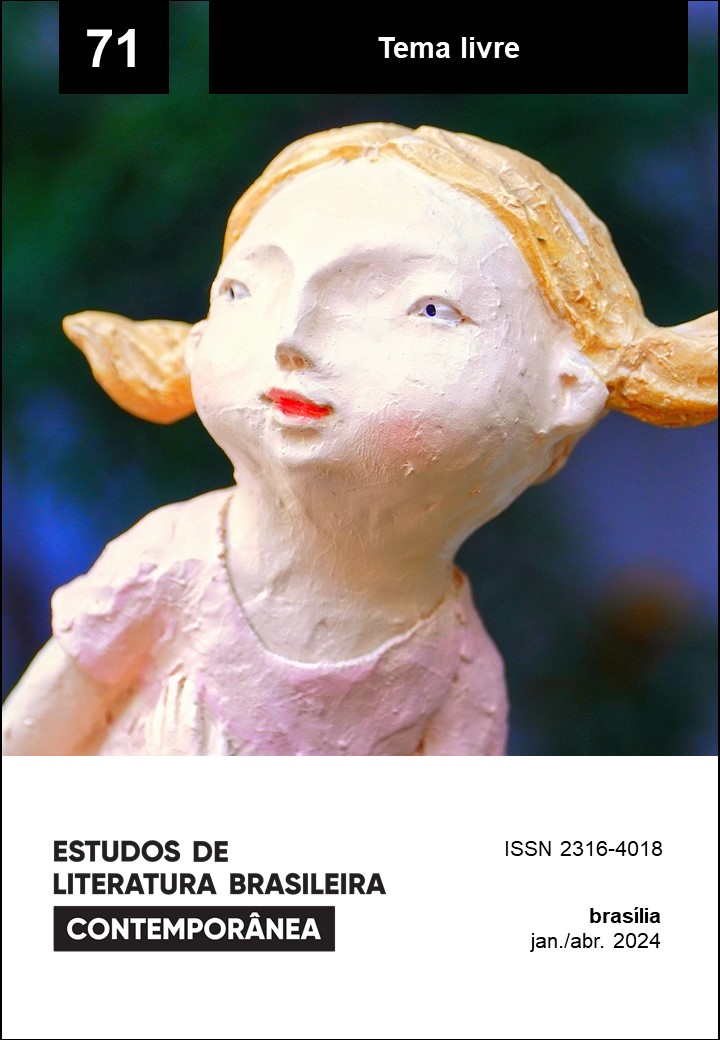Our contemporary bonfires: normative gender standards in Elas marchavam sob o Sol by Cristina Judar
DOI:
https://doi.org/10.1590/2316-40187101Keywords:
literature; gender; womenAbstract
Aesthetic standards, taboos about female body, inequality between men and women, sexuality, oppression, violence, and intolerance are issues present in recent discussions about gender. The book Elas marchavam sob o Sol by Cristina Judar, in a challenging and very original way brings all these elements to light. With an intimate and fluid narrative, the autor, through two young characters — Ana and Joan — questions normative gender standards established in our culture and interrogates their validity and usefulness. The objective of this article is to analyze some of these questions raised throughout the narrative, relating them to our social context. For this to be possible, Joan Scott’s concept of gender (1995) will be used as a guide for reflections and a bibliography that will help in the analysis process, which will include authors such as Beauvoir (1970), Pesavento (2003), Saer (2009), Emidio and Gigek (2019).
References
BEARD, Mary (2018). Mulheres e poder: um manifesto. São Paulo: Planeta do Brasil.
BEAUVOIR, Simone de (1970). O segundo sexo: fatos e mitos. 4. ed. São Paulo: Difusão Europeia do Livro.
BOSI, Alfredo (2002). Narrativa e resistência. In: BOSI, Alfredo. Literatura e resistência São Paulo: Companhia das Letras. p. 118-135.
DEL PRIORE, Mary (2013). Histórias e conversas de mulher São Paulo: Planeta.
EMIDIO, Thassia Souza; GIGEK, Thais (2019). “Elas não querem ser mães”: algumas reflexões sobre a escolha pela não maternidade. Trivium – Estudos Interdisciplinares, Rio de Janeiro, v. 11, n. 2, p. 186-197. https://doi.org/10.18379/2176-4891.2019v2p.186
» https://doi.org/10.18379/2176-4891.2019v2p.186
HUMPHREY, Robert (1976). O fluxo da consciência São Paulo/Rio de Janeiro: McGraw-Hill do Brasil.
JUDAR, Cristina (2021). Elas marchavam sob o Sol Porto Alegre: Dublinense.
MOREIRA, Virgínia Palmeira (2013). “Pronto, agora já sou moça”: valores, crenças e saberes que envolvem a menstruação Dissertação (Mestrado em Ciências Sociais) – Programa de Pós-Graduação em Ciências Sociais, Centro de Humanidades, Universidade Federal de Campina Grande, Campina Grande. Disponível em: http://dspace.sti.ufcg.edu.br:8080/xmlui/handle/riufcg/1605 Acesso em: 1º dez. 2022.
» http://dspace.sti.ufcg.edu.br:8080/xmlui/handle/riufcg/1605
NUNES, Benedito (1988). O tempo na narrativa São Paulo: Ática.
PESAVENTO, Sandra Jatahy (2003). O mundo como texto: leituras da História e da Literatura. História da Educação, Pelotas, v. 7, n. 14, p. 31-45. Disponível em: https://seer.ufrgs.br/index.php/asphe/article/view/30220 Acesso em: 1º dez. 2022.
» https://seer.ufrgs.br/index.php/asphe/article/view/30220
PODCAST RABISCOS (2021). Quanto de escuridão se esconde sob o sol? Elas Marchavam Sob o Sol – com Crisina Judar. [Locucção de:] Tadeu Rodrigues. Disponível em: https://rabiscos.libsyn.com/size/5/?search=cristina±judar Acesso em: 24 jan. 2022.
» https://rabiscos.libsyn.com/size/5/?search=cristina±judar
SAER, Juan José (2009). O conceito de ficção. Sopro, Desterro, p. 1-4. Disponível em: https://www.culturaebarbarie.org/sopro/n15.pdf . Acesso em: 1º dez. 2022.
» https://www.culturaebarbarie.org/sopro/n15.pdf
SCOTT, Joan (1995). Gênero: uma categoria útil de análise histórica. Educação & Realidade, Porto Alegre, v. 20, n. 2, p. 71-99. Disponível em: https://seer.ufrgs.br/index.php/educacaoerealidade/article/view/71721 Acesso em: 1º dez. 2022.
» https://seer.ufrgs.br/index.php/educacaoerealidade/article/view/71721
VERONA, Elisa Maria (2013). Da feminilidade oitocentista São Paulo: Unesp.
Downloads
Published
Issue
Section
License

This work is licensed under a Creative Commons Attribution-NoDerivatives 4.0 International License.
Authors who publish in this journal agree to the following terms:
a) The authors maintain the copyright and grant the journal the right of first publication, the work being simultaneously licensed under the Creative Commons Attribution License-Non Commercial 4.0 which allows the sharing of the work with acknowledgment of the authorship of the work and publication this journal.
b) Authors are authorized to enter into additional contracts separately, for non-exclusive distribution of the version of the work published in this journal (eg publish in institutional repository or as a book chapter), with authorship recognition and publication in this journal.
c) Authors are allowed and encouraged to publish and distribute their work online (eg in institutional repositories or on their personal page) after the editorial process, as this can generate productive changes, as well as increase the impact and citation of published work (See The Effect of Free Access).
d) The authors of the approved works authorize the magazine to, after publication, transfer its content for reproduction in content crawlers, virtual libraries and the like.
e) The authors assume that the texts submitted to the publication are of their original creation, being fully responsible for their content in the event of possible opposition by third parties.


